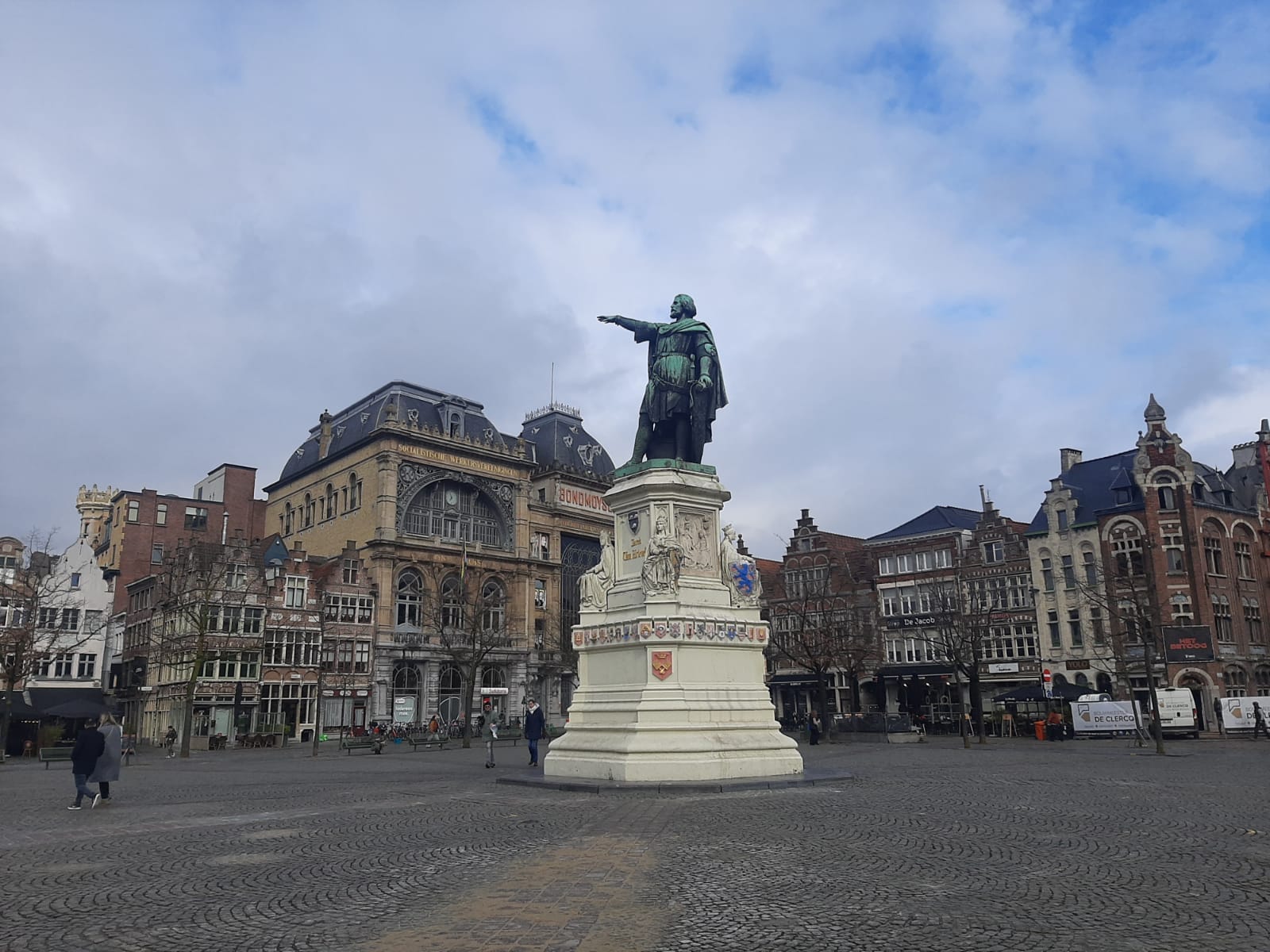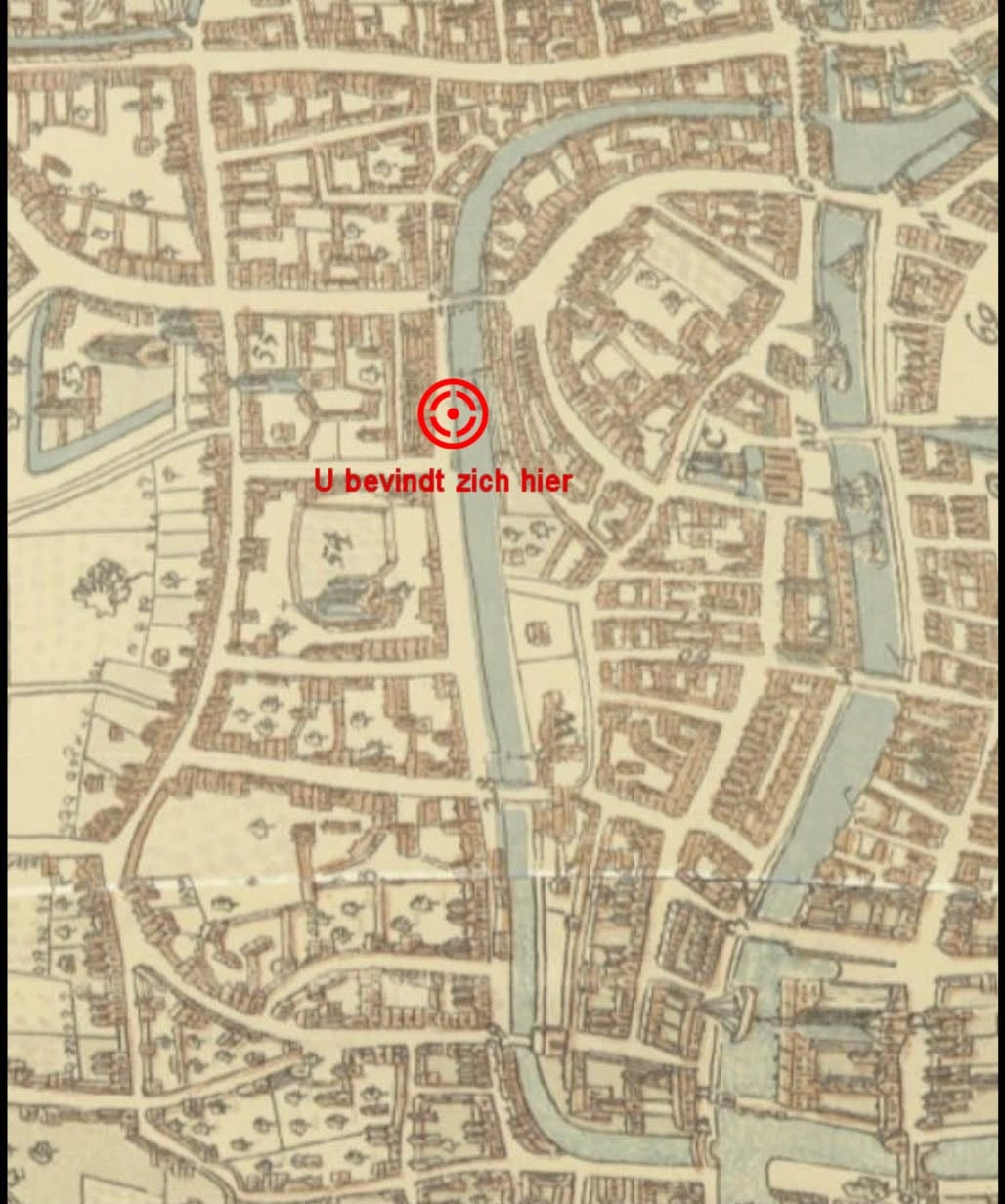The Ghent Masterpieces Walk: an extraordinary journey through time

Armed with the ErfgoedApp , I take ample time to try out the Ghent Masterpieces Walk. This heritage walk is the result of an initiative by Archives Ghent, which takes you on a journey through time using six top pieces from the archives. With great curiosity, I begin the fascinating tour.
After a short streetcar ride from the station, we reach our first stop: the Oude Houtlei. This area was first mapped in 1619 by Jacques Horenbault. He produces an extremely rare map of the city of Ghent, which is no less than 150 years older than the Ferraris maps. So while the Ferraris maps did not map large parts of the Low Countries for the first time until the last quarter of the 18th century, an even much older source exists for Ghent. Unique!

The Augustinian monks of Ghent
We walk on to St. Margarietstraat, home to the Augustinian monks since the 13th century. The oldest masterpiece of Archives Ghent is a collection of pen drawings by Arent van Wijnendale, a renowned 16th-century painter from Ghent. The drawings are an important source on Catholic architecture before the Iconoclasm.
In the 1560s and 1580s, Protestant insurgents destroyed many Catholic properties, resulting in the loss of much information from that period. The monastery on rue Margriet was not spared either, but after a 20-year pause, the monks resettled on the site in 1606. They continue to live there, even today.
Unique facade drawings
After a nice route through the oldest part of Ghent, we reach the middle of the walk at the Edward Anseeleplein. There we learn that the Ghent archives preserve some 3,400 old architectural drawings of facades from the city. The size and age of the collection (it dates from the period 1671-1795) makes it a masterpiece.
In the ErfgoedApp , I look at the old café "In de Dubbele Deur," half of the original building is still preserved. On the square there also used to be a building of the builder Peter de Meyn. Of this building, not only the original construction drawing of the facade has been preserved, but also the wooden facade itself. You can view it at STAM.
German propaganda photos
After a well-deserved stop at a café at Vrijdagmarkt, we continue our walk toward the Kouter. Here we see the hotel Falligan, where during World War I the German Kommandantur was located. There, the highest German military authorities regulated military and partly civilian life in occupied Belgium.
During the war, the occupying forces issued from this building a Kriegsalbum, an album of photographs depicting the life of German soldiers in Belgium. We see mostly cheerful company and technological tours de force: propaganda for the home front. This album from 1916 has been preserved and is the most recent part of the archive's collection of masterpieces.
If this fascinating tour has piqued your interest, be sure to download the ErfgoedApp, start the Masterpieces Walk and take a walk through Ghent's history yourself. For those who want to know more about the impressive Kriegsalbum, Archives Ghent has put together a separate walk that takes you through this special photo album. A great opportunity to explore even more hidden stories and heritage.
